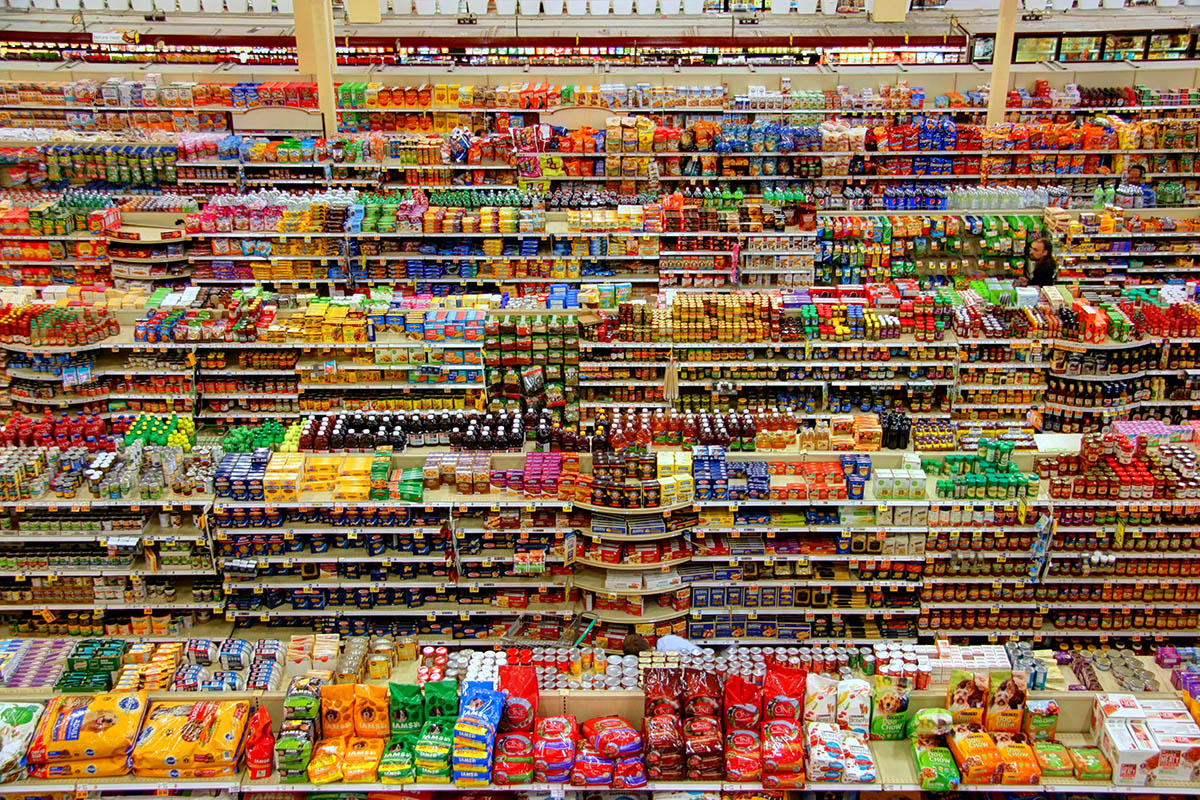The Trouble with Grocery Inflation
The current state of grocery is complicated. Sky-high grocery prices have Americans shopping as though an economic recession is already here. The consumer wallet has shifted and shows no signs of slowing for the remainder of the year. CPG unit prices jumped 11% in the past year, adding an additional $760 to the average household grocery bill. Shoppers are spending more, but consuming 2% fewer items, forcing them to scrutinize their choices.1
However, the rate of price increases is slowing, providing some relief to consumers and brands. But it’s still trending two times the rate of CPI (overall inflation). To weather the storm, you need to understand which indicators directly relate to consumption and quickly pull the right levers to find growth in a stagnant market. Staying agile and aligning with shifting consumer behaviors is key.
5 Key Tips for Overcoming Inflation in Grocery
With inflation likely to play a major role in consumer shopping behaviors through the end of 2023, knowing the right levers to pull to stay competitive is vital. But, that’s easier said than done as so many factors affecting demand are adding pressure.
With that in mind, here are 5 key tips for Grocery brands to overcome inflation:
1. Focus on Value
Consumers are more price-conscious than ever before, with 90% of households saying they are actively trying to spend less on their grocery bills.2 In times of inflation, consumers become increasingly discerning about the value they receive for their money. Grocery brands must emphasize the quality and value of their products to stand out from competitors.
So it’s important for grocery brands to focus on providing value. This means offering high-quality products at a fair price. Highlight the uniqueness, freshness, and nutritional benefits of your offerings through your marketing and stated product attributes. Such transparency builds trust and establishes a loyal customer base. Brands can also highlight the value of their products by offering discounts, coupons, and loyalty programs.
2. Promote Transparency
A new breed of shopper has emerged in recent years demanding greater transparency, and they’re continuing to grow in influence. These shoppers are prioritizing the planet’s health alongside their own personal health and that of their families. They care about carbon emissions, animal cruelty, slave labor, and recycling more than ever before. These consumers want to know where their food comes from, how much it costs to produce, and the impact that production has on the environment. In fact, more than half (51%) of consumers are now interested in knowing at least one of these factors when considering a purchase.3
Grocery brands can build trust and transparency by providing clear and concise information about their products and pricing. This can be done through in-store signage, online resources, product packaging and listings, and social media. This may allow you to connect with more consumers and continue to grow sales even as prices are high due to inflation. In fact, across retail categories, NIQ data found that brands overall see only positive impacts to sales and conversions after enhancing their availability of product information. Only 2% of companies across the globe report negative impacts4

Are you meeting evolving shopper needs?
In our free eBook, we share some of the most important factors impacting shopper behaviors, how to identify them, and the ways you can overcome them or use them to your advantage.
3. Embrace Product Diversification
Diversifying product offerings allows grocery brands to adapt to changing market conditions and consumer preferences. By expanding their product portfolios to include locally sourced goods, niche products, or other new offerings, brands can reduce their reliance on cost-inflated items. Diversifying and optimizing your product assortment can help mitigate the impact of inflation by spreading the risk across various product lines and can help avoid product overlap. In fact, an assortment optimization program can deliver up to 20% in incremental sales and profit for both suppliers and retailers by reducing item cannibalization.5
It also helps with maintaining good retailer relationships. NIQ BASES data shows that retailers begin looking at new items 3 months after shelf placement and begin reducing distribution by 6 months if they are not performing. New item performance evaluation periods have been steadily getting shorter over the last 5 years, increasing the premium put on shelf placement.6 With inflation still high and consumers shifting their spending, this window of opportunity will likely continue to get shorter.
4. Invest in Technology and Data
In today’s world, CPG brands are more reliant on technology than ever. Technology can help grocery brands to streamline operations and save money. Investing in technology to enhance the customer experience can differentiate grocery brands in a competitive market. Online ordering, curbside pickup, and home delivery options provide convenience and flexibility for customers. Moreover, leveraging customer data through personalized product pages or marketing can improve customer satisfaction, foster loyalty, and increase sales, ultimately offsetting the impact of inflation.
But technology is only as good as the data you use to fuel it. The true value of high-quality data and insights can be seen in your ability to identify emerging issues and trends and act on them. For example, nearly 50% of all promotional sales are sales that would have occurred regardless of the promotion. Without data showing you this gap, you’d be leaving money on the table with every promotion. You need to use data as the foundation for your planning and act intelligently to align your brand with the markets without sacrificing quality, brand, or market share.7
5. Engage in Smart Pricing Strategies
With consumers shifting their behaviors to cope with inflation, Grocery brands need to consider their pricing and promotion practices more than ever to avoid falling off due to belt-tightening. With prices high across the board and consumers leaning into value purchases, pricing is the most critical lever impacting commercial results. Indeed a 1% improvement in price equals an 11% improvement in margins.8 Optimizing your pricing to maintain margins while meeting consumer demand is key.
Additionally, leveraging data analytics and consumer insights can enable brands to identify products with higher price elasticity, allowing them to make informed pricing decisions that strike a balance between profitability and affordability. It can also help you craft smarter promotions and increase seasonal sales without wasting trade spend. Historically, over half of all trade promotions result in little to no sales lift, meaning manufacturers were ultimately wasting time and money.8 Acting intelligently on accurate, and up-to-date data can make all the difference.
The Future of Grocery
While inflationary pressures look to present significant challenges for grocery brands through 2023, they also provide opportunities for growth and innovation. By implementing efficient supply chain practices, fostering strong supplier relationships, diversifying product offerings, improving operational efficiency, adopting smart pricing strategies, building brand loyalty, and leveraging technology for customer experience, grocery brands can overcome the obstacles posed by inflation and continue to thrive in the market.
Embracing omnichannel sales and marketing may also help, depending on your products. 88% of CPG buyers are now shopping across multiple channels.9 While grocery has lagged behind other categories in making the eCommerce shift, the future of shopping is the omnichannel environment. Adapting to changing market conditions and embracing strategic approaches can enable grocery brands to overcome inflation and continue to thrive in a competitive market.

Fight Inflationary Pressure with Expert Data and Insights
Keeping pace with the shifting grocery industry requires understanding customer behaviors, sales trends, growth opportunities, and future demand. Which is a lot to ask if you don’t have access to accurate data and valuable insights. The experts at NIQ are here to help.
No matter your size or state of growth, NIQ provides the Full View of the market at a price that fits your budget. For emerging brands, Byzzer™ by NielsenIQ provides access to the essential data they need to successfully react to these shifting tides and build growth strategies.
Talk to our experts about new options custom-built for emerging and rising brands alike.
Don’t miss out on the market’s best data and expert insights to help you keep brand growth strong in 2023 and beyond!
Sources:
1 NIQ Total U.S. xAOC 4 weekly periods ending Weeks Period Ending February 25, 2023
2 NIQ 2023 Consumer Outlook Survey
3 NIQ Report – Transparency in an Evolving Omnichannel World
4 NIQ Brandbank
5 NIQ Report – Omnichannel Assortment Optimization for Emerging Brands
6 NIQ BASES
7 NIQ Report – The Value of Data and Insights: ROI for Emerging Brands
8 NIQ Report – Pricing & Promotion Tools & Best Practices
9 NIQ Omnishopper, Total US, 52 weeks ending 12/31/22




